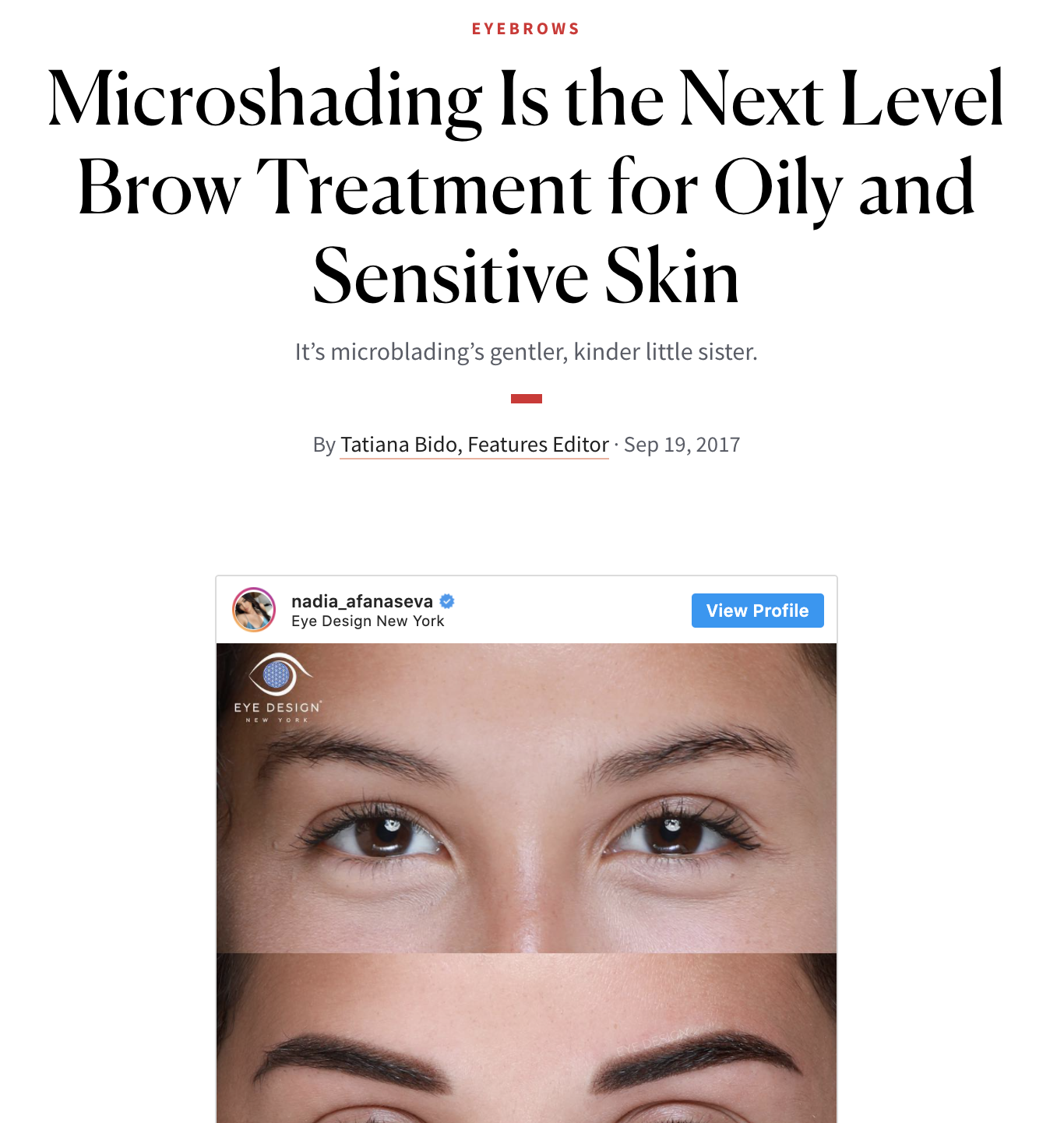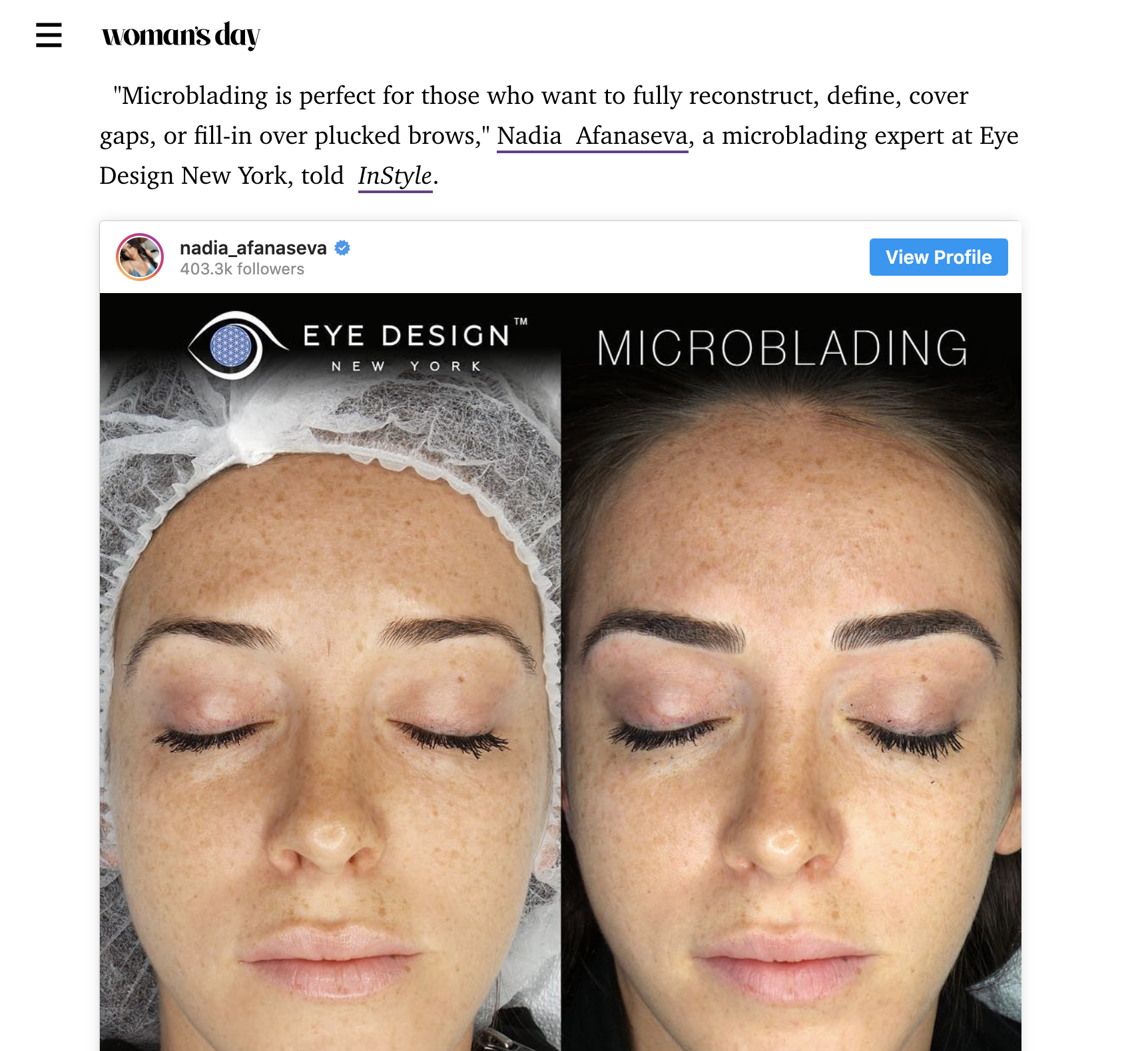As microblading and permanent brow solutions become mainstream, the demand for removal is becoming more popular.
Many clients do not research their technician or studio thoroughly before their appointments–they are simply looking for the best deal. Unfortunately, this leads to unfavorable results for some.
Eye Design founder and Master Technician Nadia Afanaseva, as well as several of our Senior Technicians, have undergone extensive training for laser removal. We are experts who want to help these clients by restoring their brows!
At our studio, we use a Lumenis PiQo4 laser. But before undergoing laser treatment for microblading or permanent/semi-permanent makeup removal, you may have a few concerns–we totally understand.
Laser treatments are the safest form of pigment removal. Unlike abrasive techniques, lasers remove the pigment safely, with little-to-no risk of scarring or infection. The machine we use breaks down pigment without harming the skin cells or hair follicles.
For clients taking certain medications, most laser treatments (not just pigment removal) can trigger photosensitive reactions. Photosensitivity occurs when the skin reacts to light. Certain medications and illicit drugs can increase the skin’s reactions to light.
More than 400 drugs are known to cause photosensitivity and photo-allergic reaction, including many commonly prescribed antibiotics, antidepressants, antihistamines, birth control pills, diuretics and retinoids (e.g., Vitamin A acids). Clients who have been on Accutane or retinol in the past 6 months cannot undergo laser treatments.
There are two types of photosensitive reactions, photoallergic and phototoxic. Photoallergic reactions occur when the skin allergen is triggered by light, causing symptoms such as swelling, burning, rash, blisters or eczematous conditions.
On the other hand, Phototoxic reactions are chemically induced skin irritations. They do NOT involve the immune system. The photoactive chemical typically enters the skin topically, and when it absorbs light, it triggers molecular changes that cause toxicity.
Certain laser treatments may also trigger photo-recall reactions, which occur when a drug, either ingested or topically applied, causes a previous sunburn or photosensitive skin condition to reform. This can happen years or even decades after the initial reaction.
Common drugs that cause photosensitive reactions include the following: ACE inhibitors, antiarrhythmic agents, antidepressants, birth control pills, calcium channel blockers, chemotherapy agents, corticosteroids, hydrochlorothiazide, immunosuppressive agents, interferon, NSAID’s, Premarin, Quinones, Retin A®, SSRI’s, statins and sulfa drugs.
If you are on any of these drugs, or if you are unsure, Eye Design strongly recommends that you consult with your doctor before you make an appointment for any of our laser treatments (or laser treatments elsewhere).
For eligible clients, laser treatments are a quick and effective method for pigment lightening or removal. The number of sessions required to remove a cosmetic tattoo depends on several factors, including its depth, its size and the intensity of the pigment. Sessions last from 5 to 15 minutes each (scheduled 4 weeks apart) and there is no downtime!
You can return to your normal routine right away. Just like our microblading and semi-permanent makeup procedures, we use a topical anesthetic (numbing cream) so that clients are comfortable throughout the entire process.
Once you confirm with your doctor that it is safe for you to undergo laser treatments, please call our studio at (917) 300-0317 to book an appointment or a consultation! Eye Design’s technicians will assess your brows and decide what will work best for you.
Tags: eye design , New York , microblading, eye design ny, permanent makeup, nadia afanseva, semi-permanent makeup










